While photo comics, also known as fumetti, have appeared sporadically in Britain since the 1950s (and had become a significant publishing phenomenon in Spain, France and Italy over this period), the form only reached its high water mark in the UK in the late 1970s and early 1980s, when publishers such as IPC, in London, and DC Thomson, in Dundee, produced a series of titles using the photo comic format. These were, in the main, romance titles developed for the girls’ and teen markets, such as Photo Love, although boys’ adventures comics of the period (most importantly, the relaunched Eagle, in 1982) also experimented with photo comics for a brief time.
One of the busiest and most talented photographers to work on British photo comics was Howard Payton, whose career encompassed almost all the IPC photo romance titles, from Photo Love and My Guy to Dreamer and Girl, and who also contributed extensively to the Eagle.
Now living in Dorset, Jim O’Brien asked Howard to look back over his time as a photo comics master… and finds out about a Mick McMahon comic strip very few of his fans are likely to be aware of along the way…
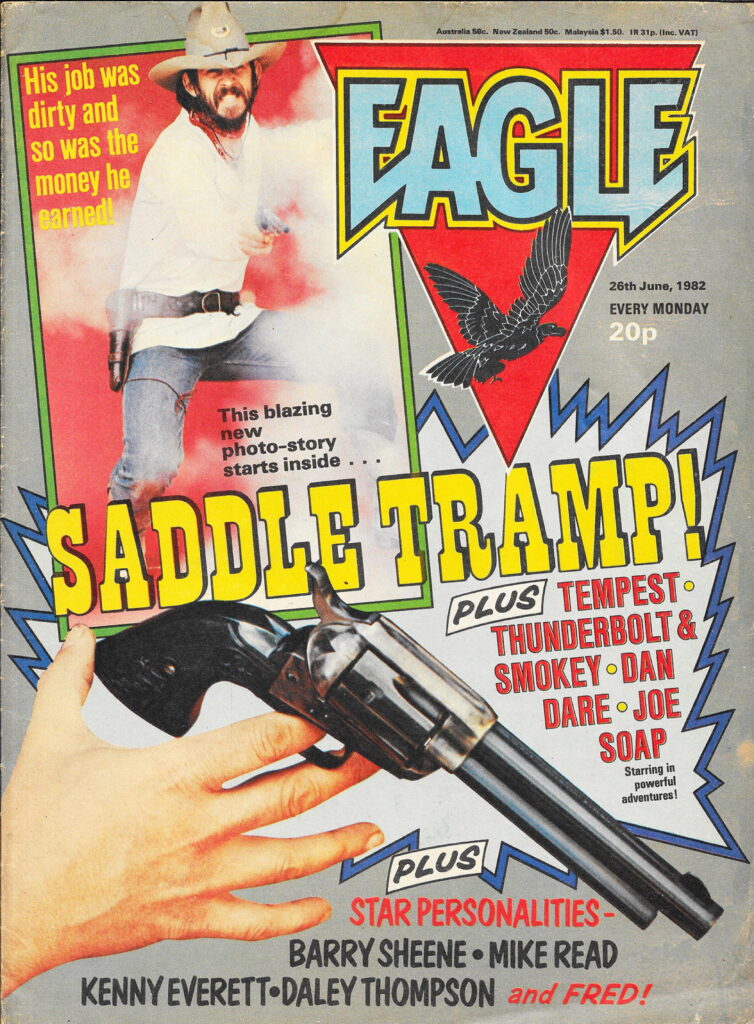
Jim O’Brien: Howard, what did you do prior to working in photo comics?
Howard Payton: Well, I was at art college in the late 1960s, then at the London Film School between 1971 and 1973, where director Mike Leigh was my tutor. After that, I worked as a film cameraman and did a lot of documentaries.
I had wanted to work on features but they were difficult to get into and there was a lot of regular work in documentaries, so I went down that road – filming a fork lift truck in a pit in Newcastle, that sort of thing!
I did early music videos as well, including a lot for Island Records. I never filmed Bob Marley himself, but I did film the Wailers onstage at the Hammersmith Odeon. In fact, I did various promo videos at the Odeon, and at the Basing Street Studios. I remember being asked to shoot some film for Midge Ure and Ultravox there, before they were at all well known.
For United Artists, I photographed the Electric Light Orchestra and Rod Stewart, and various bands at the Marquee Club in Wardour Street. You had to shoot very quickly on those assignments, which stood me in good stead when, later, I was working on photo comics at IPC, who wanted stories quickly and where you had to justify cost-wise how long you’d had an actor working for you. Also, because a lot of the actors were children, you just couldn’t keep them out too long and needed to be able to work fast in order to get things wrapped up.
Jim: How did you get started on the photo comics?
Howard: A friend of mine from art college days, David Wadmore, had gone to work on Fleet Street as a designer and by the late 1970s he was working at IPC. He let me know that the company was going to revitalise some of their comics by using photos, and asked if I would be interested. Of course, I jumped at the chance!
I think IPC were looking for a new, less ‘1950s’ look for their girls’ titles. And I think especially in girls’ comics there was a sense that photographs made it easier for the readership to identify with the characters. Photographs were more immediate and ‘now’.

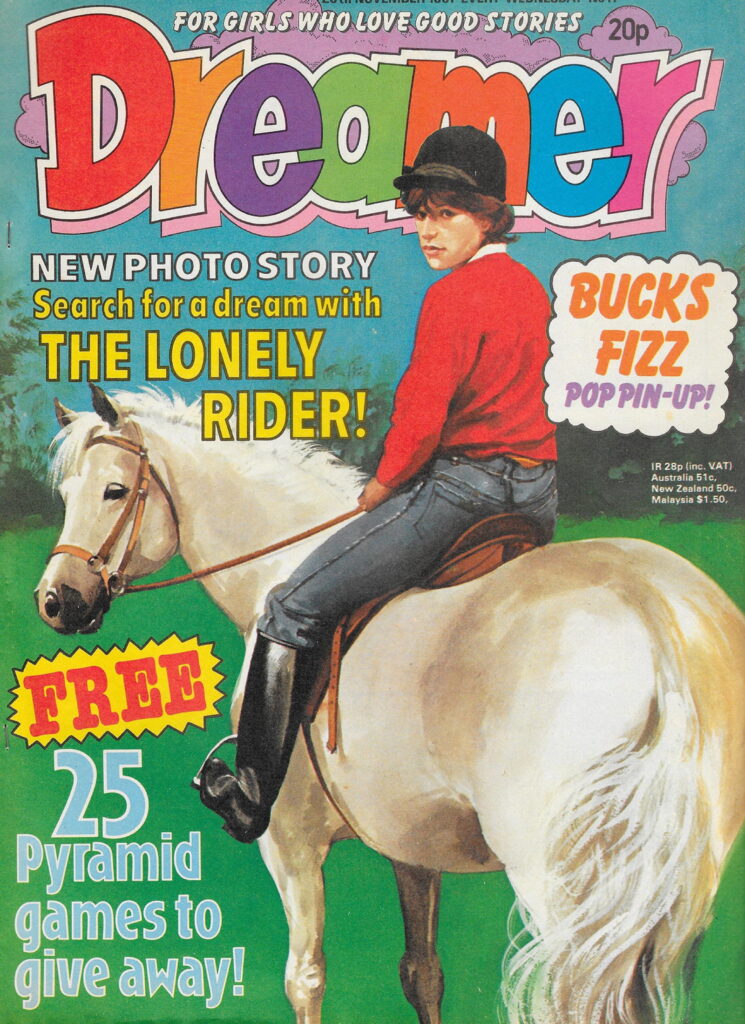
Jim: Which of the IPC girls’ photo comic titles did you work on?
Howard: I started on Photo Love in 1977, which was edited by Hamish Dawson, then went on to work on Photo Secret Love, Girl, Dreamer, Oh Boy! and My Guy.
The stories could be anything, but because I owned a farm at the time, between the villages of Bucklebury and Stanford Dingley near Newbury, I increasingly started to pick up stories with country settings and animals in them – something that carried on all through my career.
We had all sorts of animals on the farm – dogs and horses and pigs and sheep so it made sense for me to take on those assignments.
Jim: What was the procedure creating the stories you worked on?
Howard: I’d go into the IPC office and talk with the relevant editor and writer and find out about new stories. They had great titles, quite over the top, which we’d laugh over – “Kiss of the Devil”, “The Prisoners of Heartbreak Farm”, “The Village of Whispers”, “Yesterday’s Madness”, that sort of thing. The titles sometimes changed before they were published and often got toned down a bit.
For example, one story I photographed that featured a sinister vicar was called “Jack the Vicar” in the initial correspondence, but was renamed the more sedate “Sunday’s Child” when it actually appeared in Photo Love.
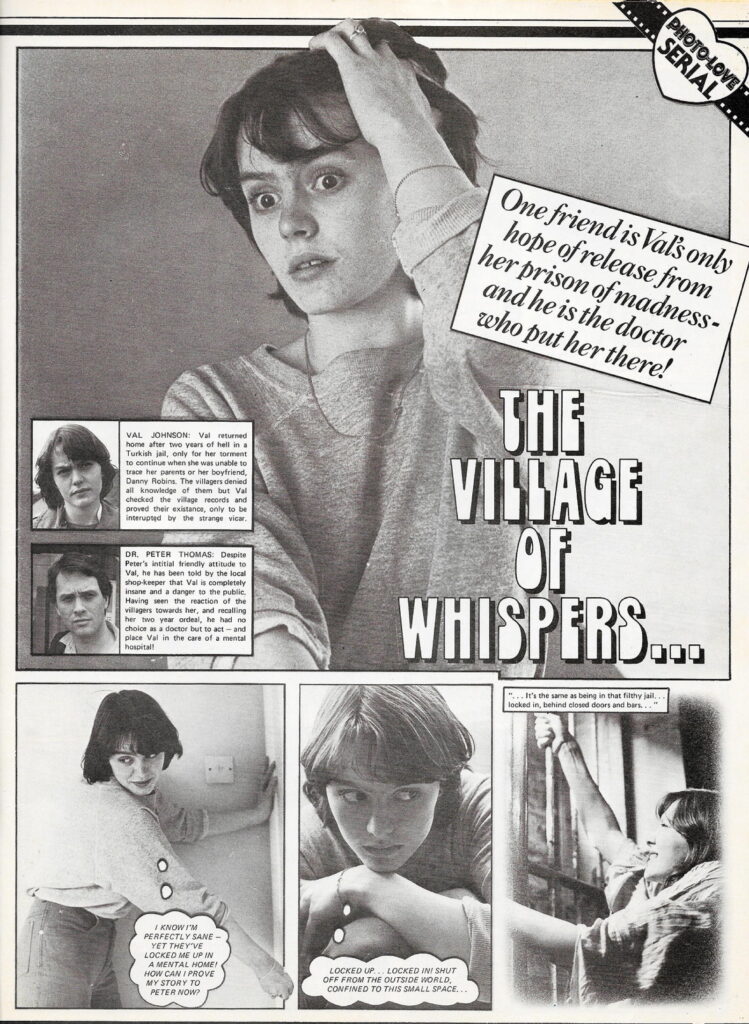
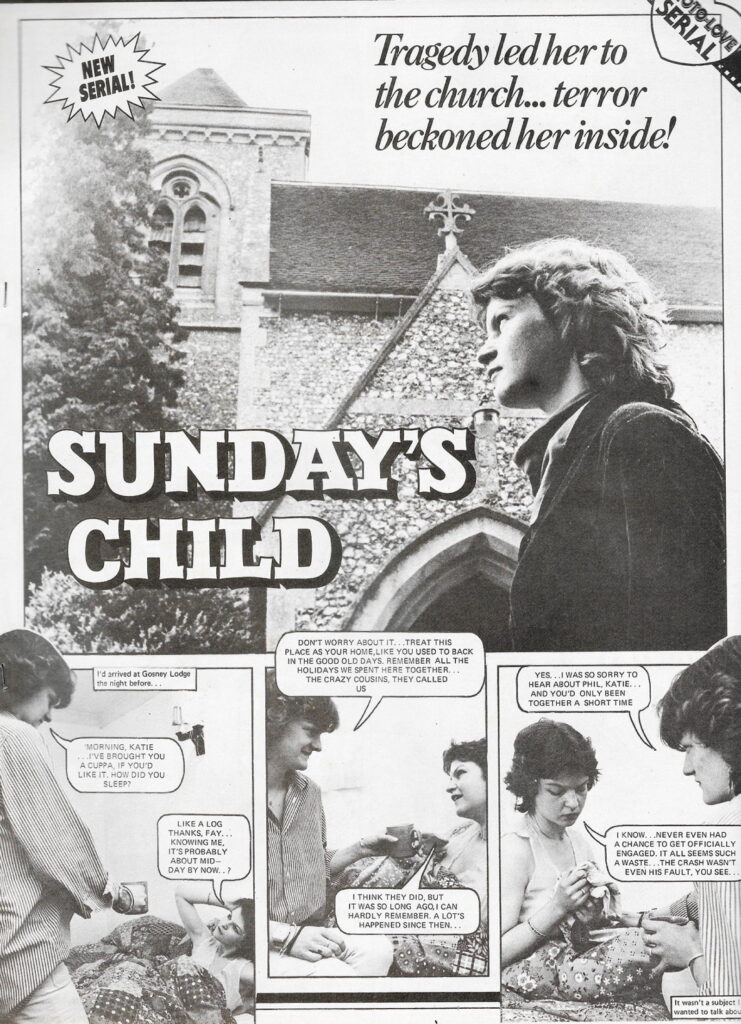
Once I’d taken on a story, I’d be sent scripts. I tended to get several weeks’ scripts at a go, sometimes the whole thing, as especially historicals and stories with animals in them involved a lot of preparation and run-up time. I’d scout out locations and choose people who I thought would be good for the parts, and talk to them to see if they thought they could cope with whatever was going to be needed. I’d take photographs and then take those up to London to show the editors, you know, saying, “I think he’d be good for such and such a part,” or, “This would be an ideal location,” etc.
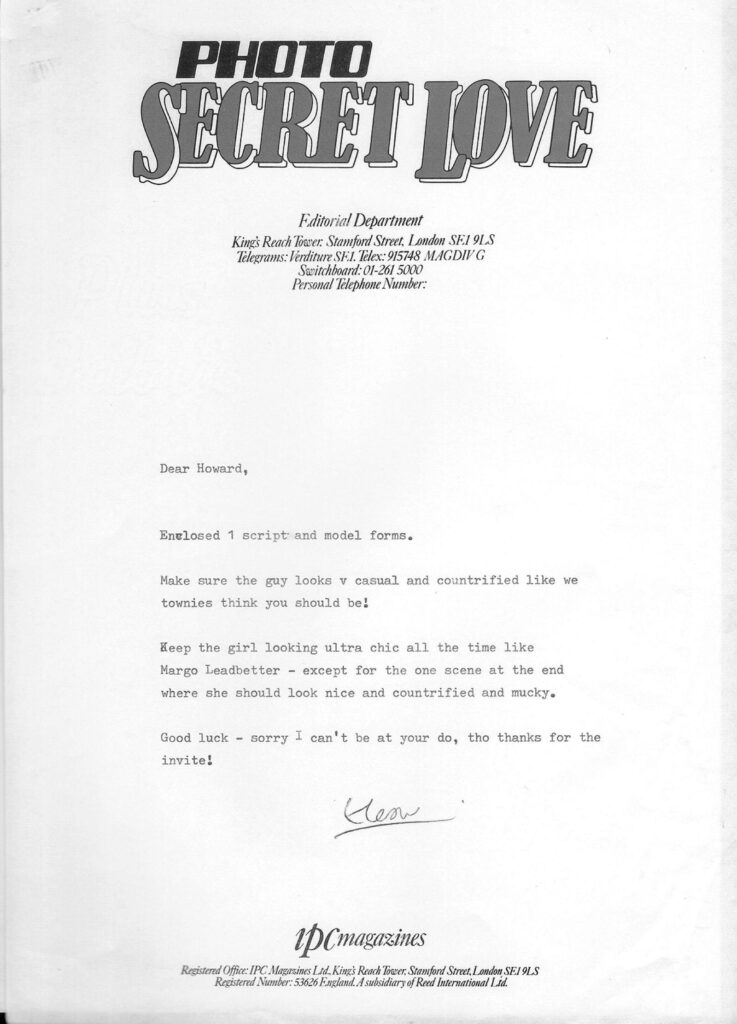


The editors usually went with my suggestions, but they did query things on occasion. For instance, if I had picked a girl who was a really good actress or who could handle horses or something but who wasn’t maybe as pretty as some others. I did try to argue that you can’t always have just the prettier actresses and that, after all, the kids reading the stories were for the most part the “normal” sort of girls I had picked.
Sometimes the writers would come down to the farm to discuss how their stories might be photographed and I’d show them the locations I’d chosen and so on. Very occasionally, I actually included the writers in their own strips.
Jim: Other than those lucky writers, who actually were the performers in your strips?
Howard: It was quite a variety. I used my family and friends, as well as acquaintances and neighbours who lived nearby. My mum was in some stories, as were my daughters, Aimee and Holly. Lady Bader, Douglas Bader’s widow, lived in our village and I even tried to get her into a story once!

Often, I would try and use people who lived or worked in the location I was photographing at, so, for example, if I was using a school as a location, I’d have the actual pupils taking part.
For some of the stories, especially those for the older-reader titles, like Photo Secret Love and My Guy, IPC usually employed professional actors while the younger reader titles drew on drama school kids. I know people like Hugh Grant and Tracey Ullman appeared in some of the romance photo strips, but I never got to work with them.
Aimee and Holly were quite young at the time and went to a dance school once a week, the Jeanine Greville Dance Academy at Tilehurst near Reading, and I got a lot of the dancers from there who wanted to be actresses as well. They were generally between nine and 18 years old. They and their families were very willing, because they wanted to promote their careers. They were all good dancers and many of them went on to do great things.
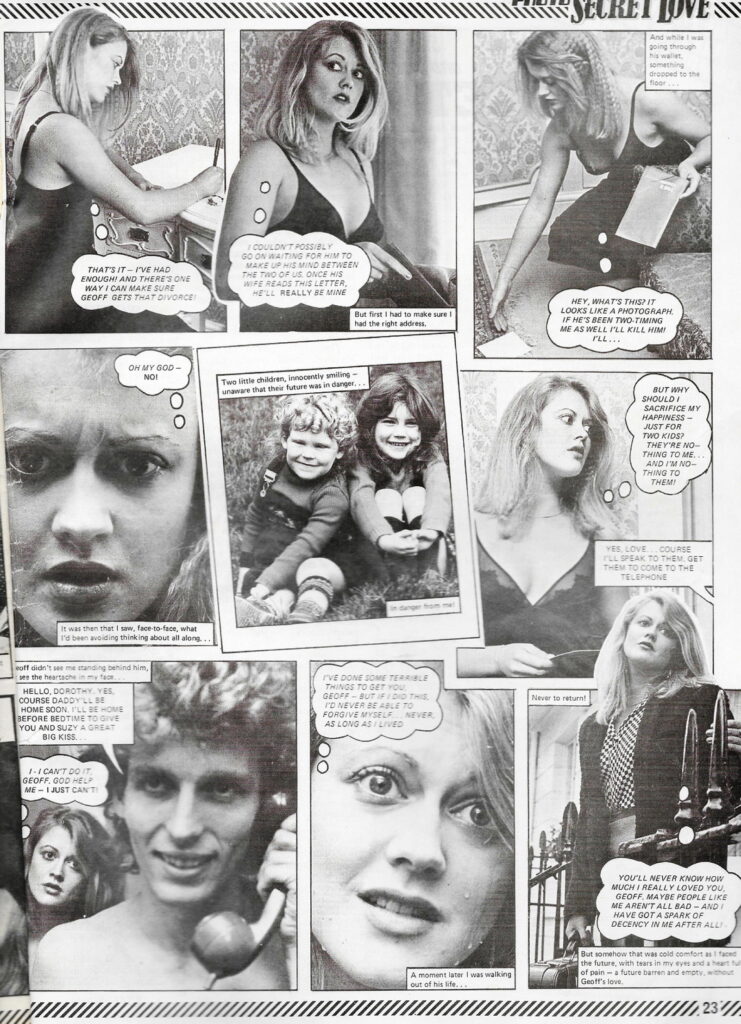
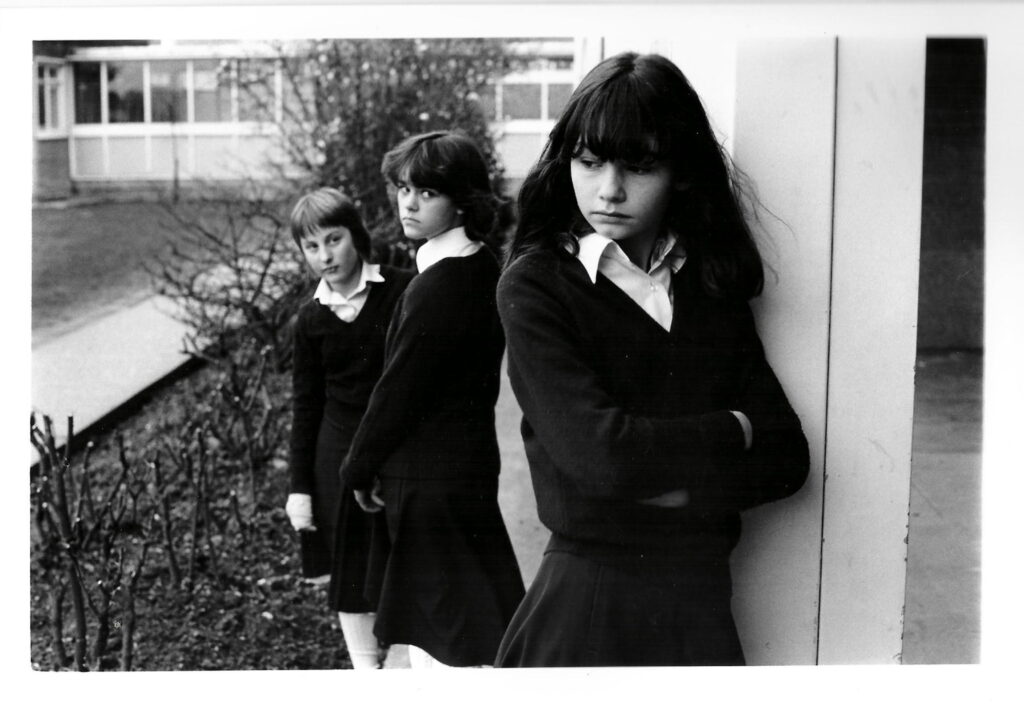
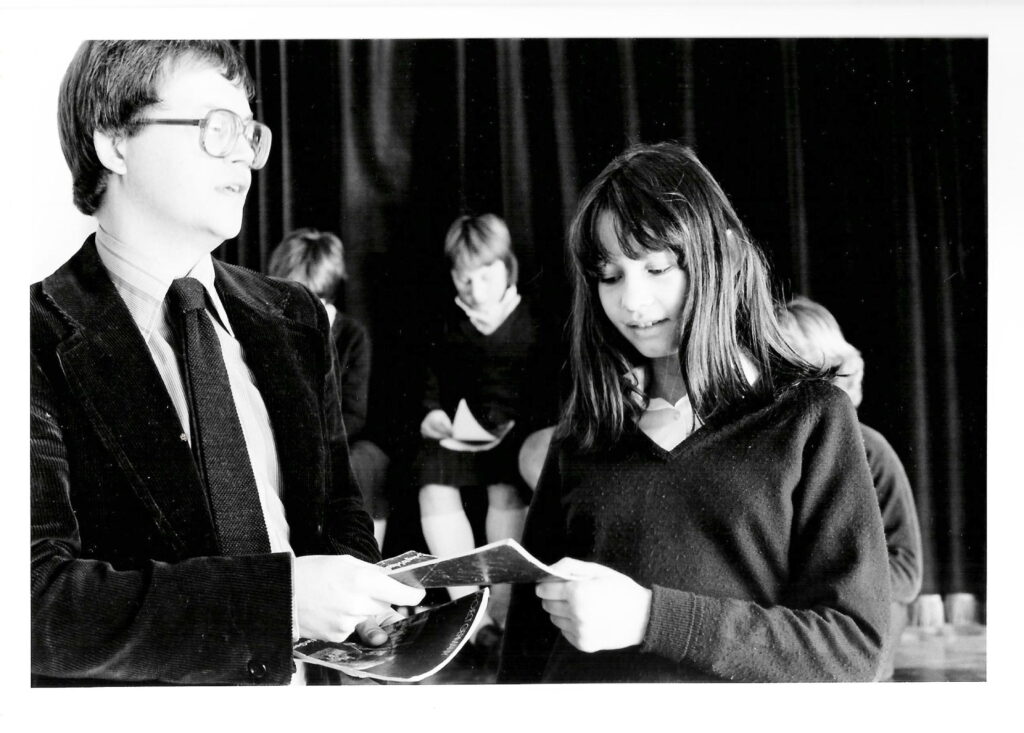
I’d go down and see who might be good for a particular storyline then I’d go to their houses on a Saturday morning or whatever, pick them up and head off to shoot all day, give them something to eat at lunchtime and then take them back home. There were never any problems, but looking back, I probably should have been more overwhelmed by the responsibilities I had, looking after so many children and young teens!
Continuity could be a problem with non-professional performers. On one of the Photo Love stories, a girl turned up for a second day’s shooting with short hair who had had long hair on the first day, so we had a problem. Poor girl, she just said, “Oh, I didn’t realise…” We did get round it somehow. And availability could be an issue, as these children tended to be very “busy”, so you were competing with other activities for their time. But we never lost a story through problems of that sort.
Sometimes your lead actors wouldn’t really hit it off and there wasn’t much chemistry. I’d leave any clinch shots till the very end in that case and just say, “Come on, let’s just do a quick kiss and wrap it up.”
And as I’ve said, animal performers were no problem, as they were very often my own!
Many stories, including “The Scars of Love”, in Photo Love, had my horse Toby in them. He was unfazed by fire so we could actually light a bale of straw in front of his stable for a story and not panic him.
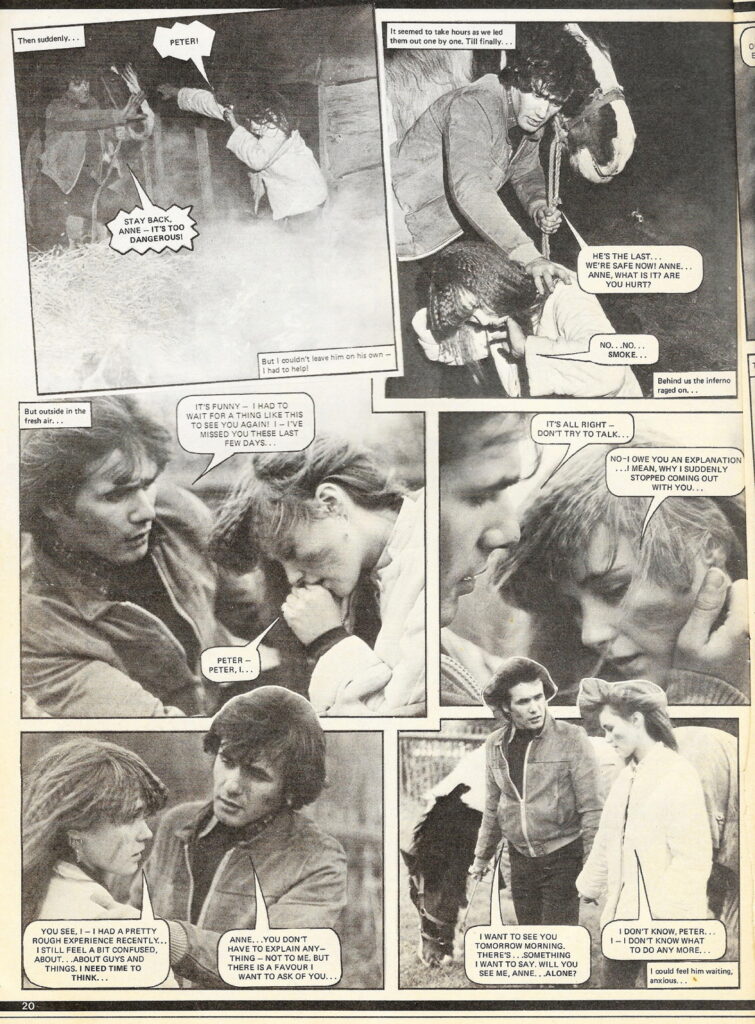
My dog also featured regularly. Because he was a sheep dog and could work to commands, I could get him to lie down and pretend to be dead, or come forward or jump or whatever, whenever I needed. I never charged for my animals, but I got the stories because I had them.
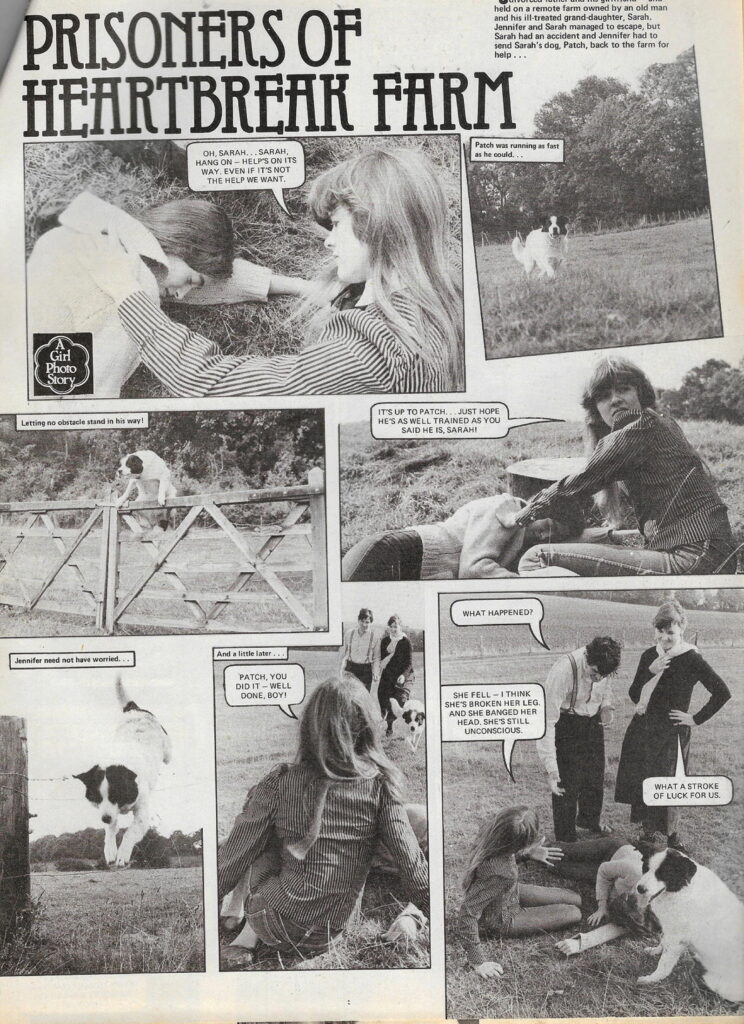
Jim: And what about the locations you used?
Howard: Well, again, there was a huge variety, but usually they were very local to where I lived. For example, the first story I photographed for Girl (called “Suzie all Alone”) was a school story, so I arranged to shoot it at the big comprehensive down the road from me.
In fact, I tried to use another, older school as a location for a story in Photo Secret Love which, as a title, was a little more racy than Photo Love and was aimed at a slightly older audience, more at teenagers. It had ads for bikini waxing and agony columns and so on. It was all about the “angst of teenage love”!
I asked the school whether we might be able to shoot there, and they were really up for it until they asked what the magazine was called. I kind of mumbled, “Oh, it’s called Photo Secret Love…” and their enthusiasm waned!
I would use my own farm and house from time to time as a setting, or would ask friends if I could photograph on their land. I also tended to be given historical stories for much the same reason: I could find locations near my home that with a bit of thought could look sufficiently old-fashioned to work successfully. People got reimbursed if we used their houses, friends of mine and so on.
However great the location though, most of the images selected by the editor were usually straightforward heads and shoulders shots and, sadly, a lot of the background was covered up by the speech bubbles.
There were exceptions to the ‘local’ rule. An early Photo Love story I worked on called “Love Lies Sleeping” from 1979 involved a guy trapping a girl in a cellar, and the editors weren’t sure where we could film it. I said I knew exactly the place, because when I was first at the London Film School in 1971-2 Covent Garden market was still open just round the corner. By the following year it had closed and moved to South London and there were all these empty warehouses the market had moved out of. As a result, a lot of student films were shot in the warehouses and lockups, and I remembered them when I was offered “Love Lies Sleeping”. The editorial team did rely on photographers knowing where they could go.
Incidentally, the heavy in that story was reputedly the former Shah of Iran’s bodyguard.
Later, the team at Girl had indicated they wanted to do a story about a selkie, a sort of fantasy tale called “The Secret of Seal Island”. I said I was going to the Orkneys on holiday and that I knew a couple of girls, friends of my family, who would be able to play the parts. The selkie herself was played by a lovely girl called Tasha, who later became a singer (she was also in “Suzie all Alone”). We had a dress made for her to look like seal skin. Lots of locals were involved, and thought it was hilarious.
For scenes where the selkie has to be seen rising from the water, I got a friend of mine in the Orkneys, a fisherman and the local lifeboat skipper, to take us out to a promontory, a sand bar, where we waited for the tide to come in so that it would appear as if Tasha was in the middle of the sea.
Again, it was the contacts I had in the Orkneys that made the story possible. I was able to find the performers and have access to suitable locations, like working boats and people’s cottages. The locals loved it and would always talk about it when we went back on later visits.

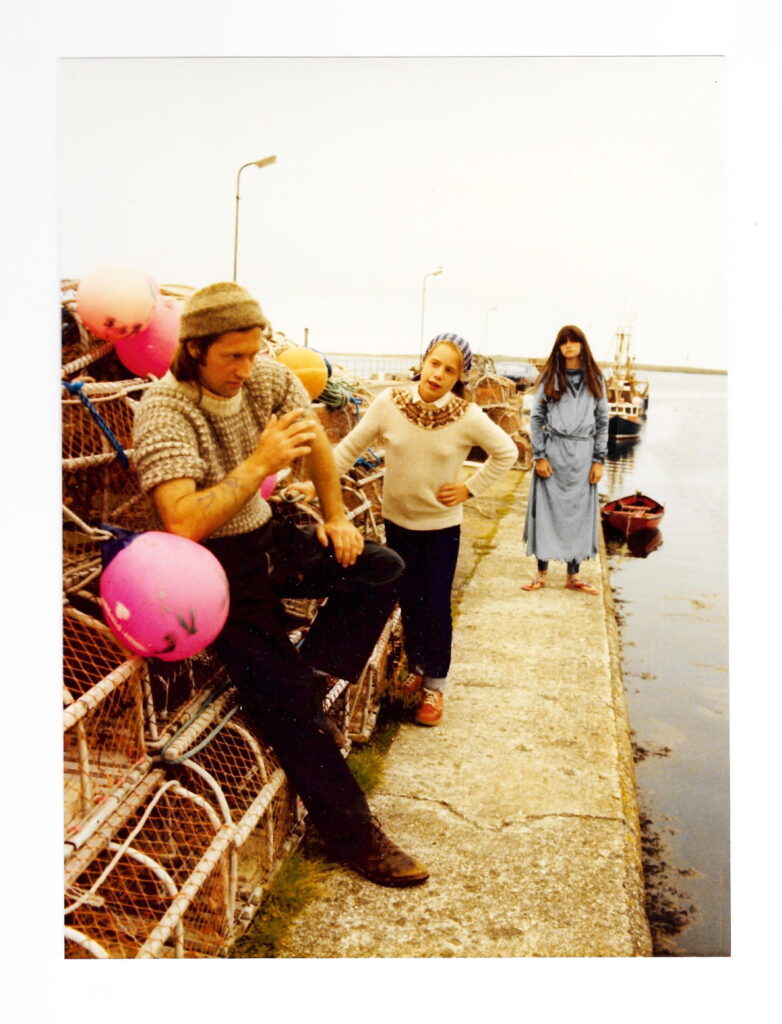
Jim: Did you receive on-page credits for your work in the girls’ photo comics?
Howard: Not often. Mind you, I did appear in some of the stories. For instance, in “The Secret of Seal Island” I played a fisherman, complete with biro tattoo on my arm which said Girl or My Girl or something like that, as an in-joke. I also included myself in other stories, playing a country copper on his bike in one and Barbo the hired gun in “Saddle Tramp” for the Eagle.
Jim: Tell me about your short feature film, He Came Back to Love, and its connection to the girls’ photo comics.
Howard: Well, as I was saying, I had always wanted to make a feature film and in 1979 my friend Chris Welch came back from working as a dubbing editor on Monty Python’s The Life of Brian. Because the filming had gone on for months rather than weeks, he had built up a bit of a pot of cash by the time he got back and said, “Let’s make a film!” The actual story of He Came Back to Love was the idea that drew on my experiences working in the romance photo comics, but Chris and I very much worked together on the project, both of us writing the original script, and with him directing and me working as associate producer as well as finding the locations and many extras that took part.
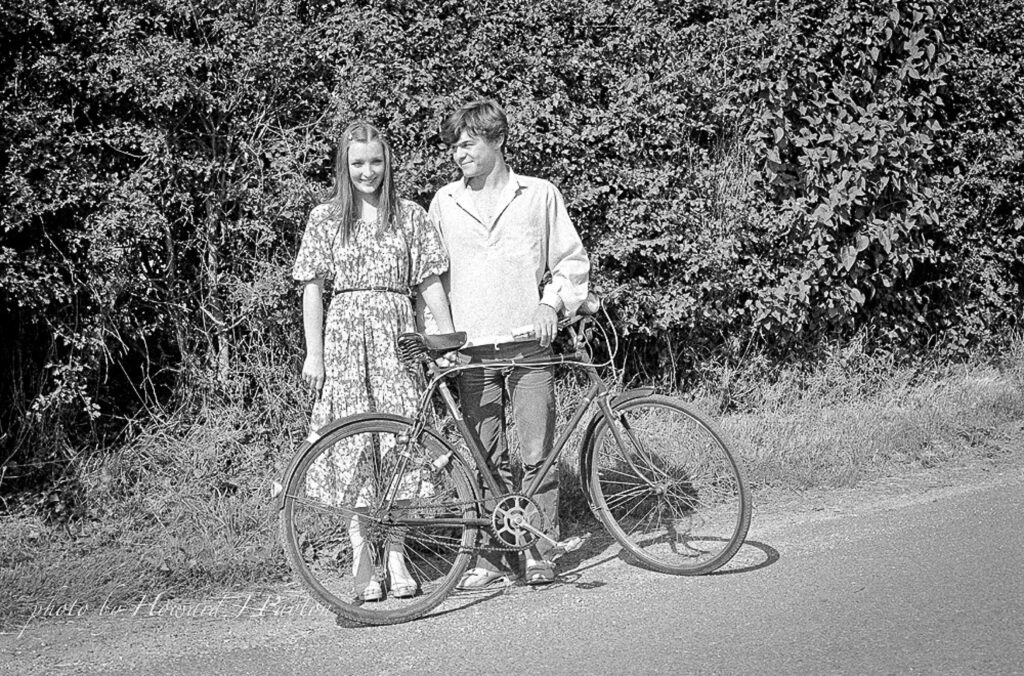
The film’s a comedy all about a young couple, Alan and Julie, from the fictional town of Middleton. Alan’s been away in London getting into the music business (so he says) but comes back home to pick up where he left off with Julie – only to tangle with the Middleton chapter of the Hells’ Angels and discover Julie’s been diagnosed with the disease, Clegthorpe’s Syndrome!
When Chris and I were casting the film we got in touch with Mike Leigh, who suggested some young actors to us who were looking for experience in films. We were able to give Lesley Manville and Jamie Foreman their first actual film roles, as well as giving parts to several others, including Eric Richards and Kevin Lloyd who were both later in The Bill, and Gwyneth Strong who went on to play Cassandra in Only Fools and Horses.
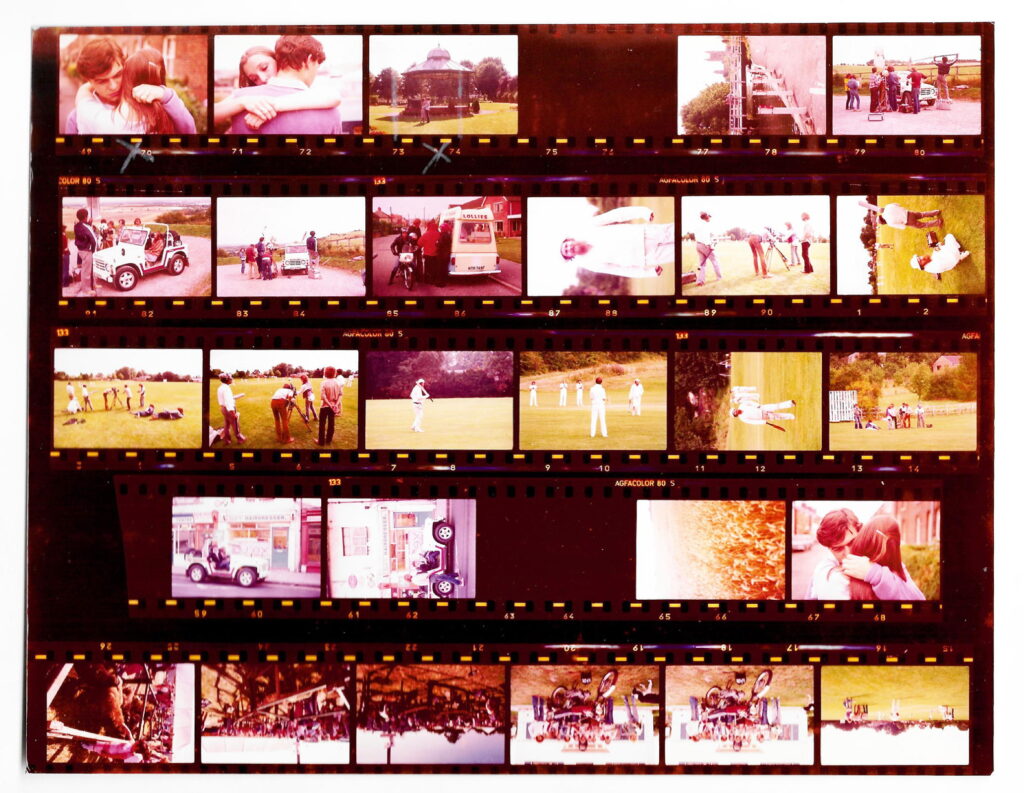
The film only had the smallest possible release in London and dropped out of sight altogether when we were let down by distributors. In the film’s opening moments, we see people buying magazines from a station-platform newsagents and there are copies of Photo Love and My Guy and so on, on the counter.
We also dummied up a faux romance photo comic called Love Pix! to use in the film and, through Dave Wadmore at IPC, we were able to get Mick McMahon to draw the comic strip that the film’s opening and closing credits are based around.

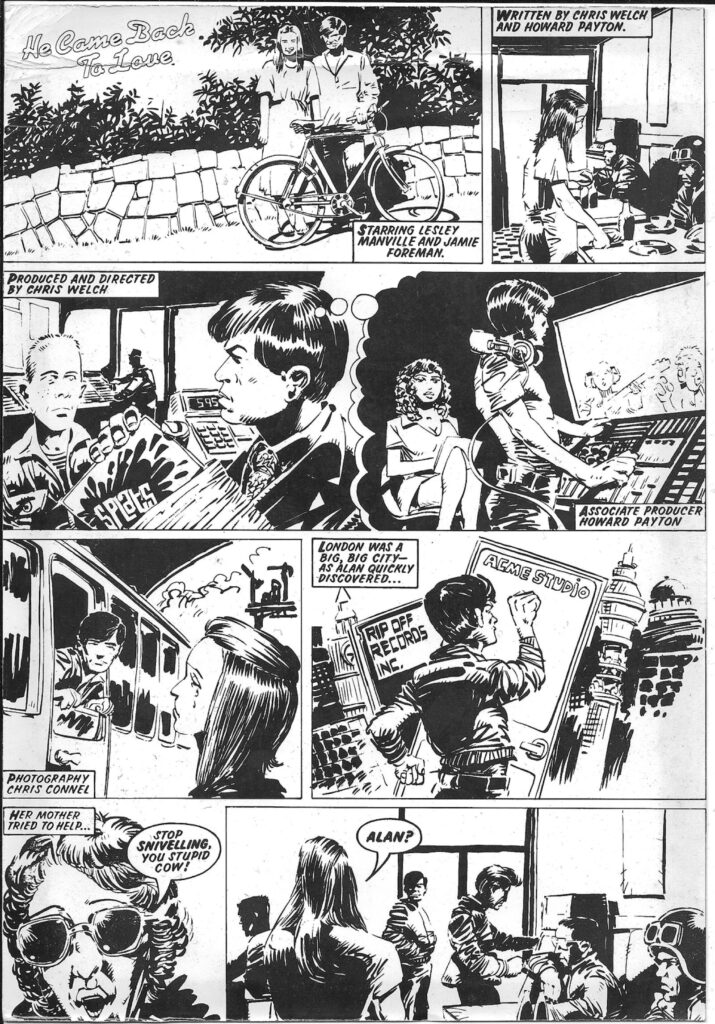
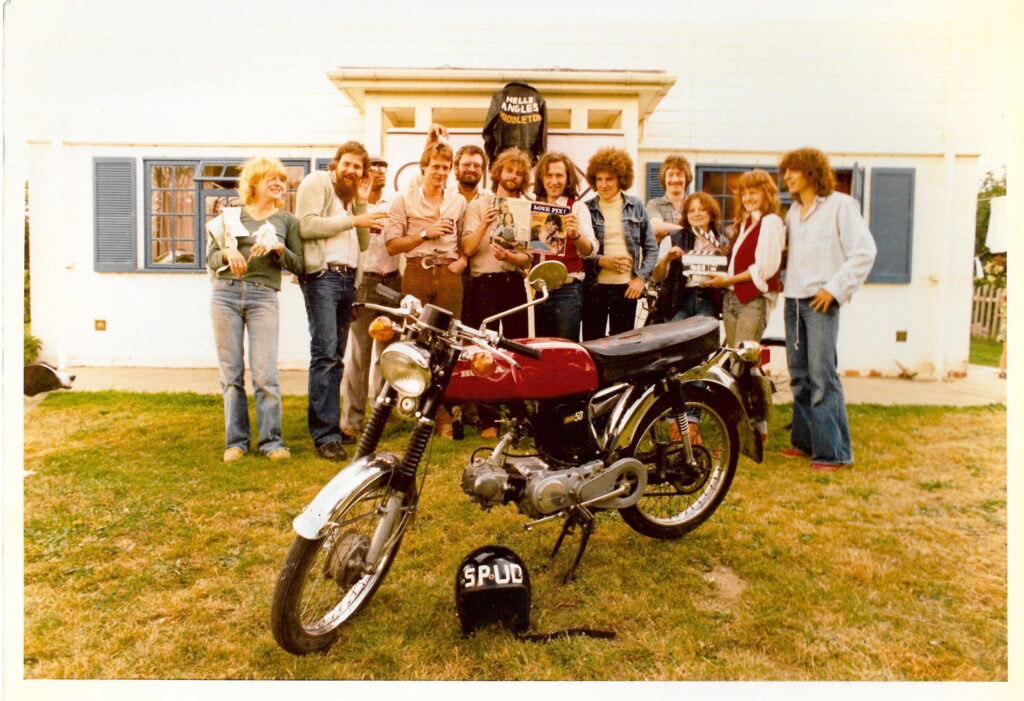
Jim: Moving on from the girls’ photo comics, you also worked extensively for the new Eagle after its launch in 1982.
Howard: Yes, I did the long serials “Saddle Tramp” and “Walk or Die” for the Eagle, plus several spooky Collector tales including “The Duel”, “Birds of a Feather” and “The Lair of the Dragon”. The editors and writers I worked with included Norman Worker, Gerry Finley-Day and Scott Goodall.
Norman Worker was a very interesting guy. His cousin was the Modesty Blaise author Peter O’Donnell, and he knew everything about comics. Funnily enough, we also shared a passion for farming as he had managed a farm in Sussex for a time after the war.
Jim: What are your recollections of photographing “Saddle Tramp”?
Jim: I think Gerry Finley-Day had indicated he’d like to do a western, but the Eagle editorial team didn’t really know how to do it until – all nonchalantly – I said, “Oh, no problem. I know a western town we can use!”
One of the first historical stories I had worked on for Photo Love was “For the Love of a Lady”, a Civil War set story that I photographed at Littlecote House near Hungerford. Littlecote belonged to Sir Seton Wills, and was famous for its connections to events in the Civil War. Sir Seton had reenactor groups staging Civil War battles and so on at the house and I involved them in “For the Love of a Lady”.
I noticed a lot of the guys who were playing the roundheads and the cavaliers wandering over between shots to the stable area at the back of the house and discovered that a western re-enactment town, Frontier City, had been built there. That’s how I discovered it and came to suggest it for “Saddle Tramp”.
Frontier City had been set up by a guy called Malcolm Warriner, aka JB. Sir Seton Wills was interested in westerns and JB and co did occasional weekend shows for him, the shoot-out at the OK Corral, that sort of thing. At that time there were a lot of American airmen based at nearby Greenham Common and they used to come down and say how authentic it all was.
JB said what they’d really like was somewhere permanent to set up. Sir Seton showed them into the farmyard, and JB said yes, that’s fine and they just converted it into a wild west town.
JB had absolutely everything, really genuine gear. So, for example, when I needed to do a flashback involving Confederate soldiers he said, “No problem, I’ve got all the stuff.” When we arrived for filming, everyone was dressed in all the right clothes. For desert scenes, we filmed in a friend of mine’s sand extraction quarry on Bucklebury Common near Newbury.
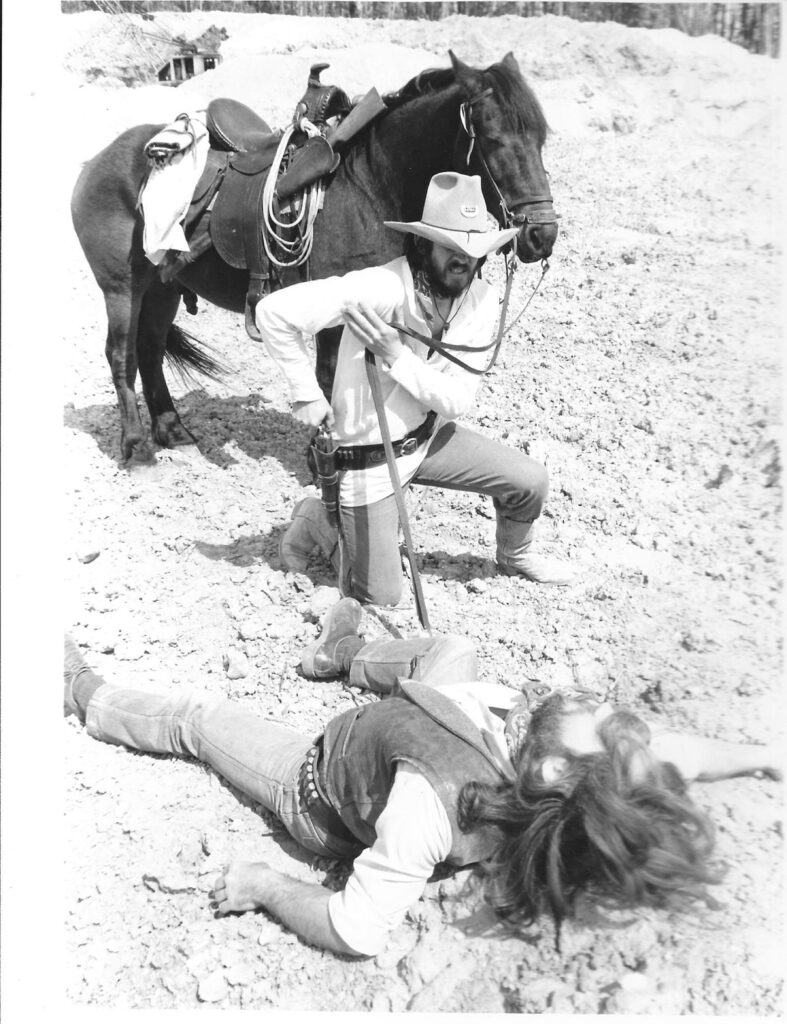
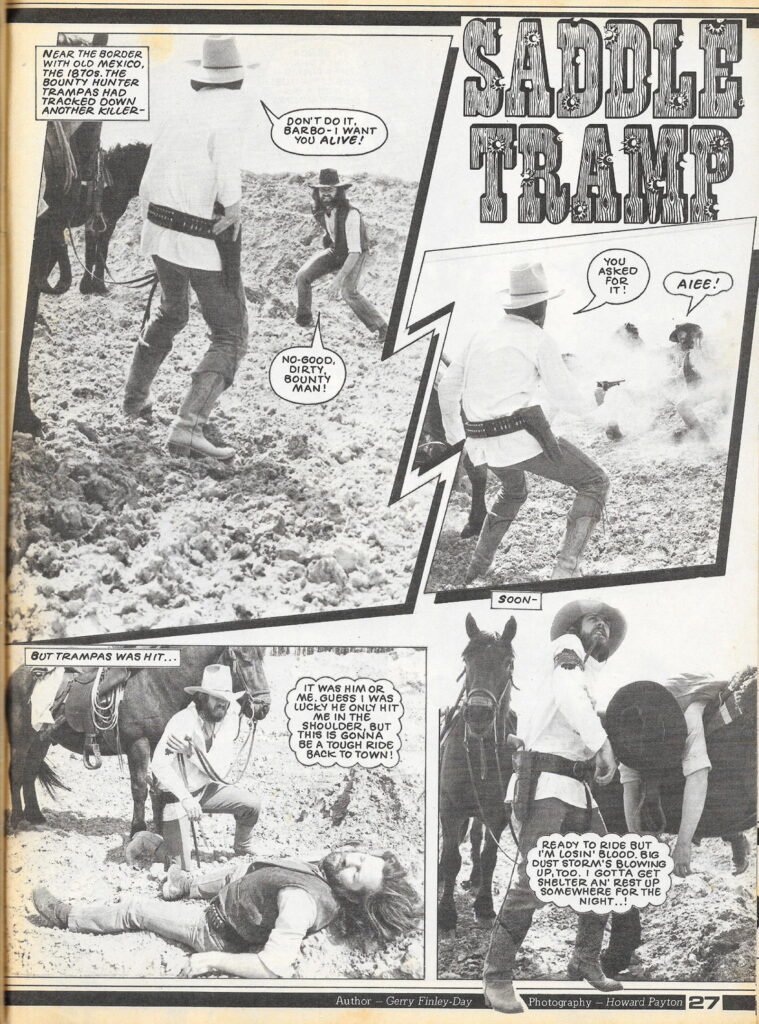
I would be sent the script or would meet up with Gerry Finley-Day to talk about it. I then drew up a running order of things and discussed with JB what we could shoot and where. He came up with plenty of the locations and others (like the sandpit) I did, then we just shot everything in sequence according to the script. It was then all put together by the editors, who did the layouts, etc.
As people had to be bunched very close together for dialogue scenes, you sadly couldn’t have those lovely panoramic shots you get in westerns. And you had to leave space within each frame for the talk bubbles. It felt a bit strange until the guys got into it.
The other thing that was awkward for them was that, if characters needed to be seen to be speaking, they had to be photographed with their mouths slightly open, which felt a bit unnatural. So, for these guys I’d give them a bit of the line because it felt easier and brought across the expression. As reenactors rather than actors, they were so into their period that everything had to be “right”, and it did slow things down a bit maybe!
A lot of the shots we did as “live action”, shooting with the camera set on continuous drive. So, with moments with – for example – someone flying through the air, you could choose a particular shot from a run. And JB and the others really would do the whole stunt. They’d maybe have a blanket or something to land on, but they knew how to fall, so did it very authentically.
One time I wanted a night shoot in an old barn set up like a western saloon and we decided to ask Sir Seton if he would like a cameo role. JB offered to get him some proper cowboy clothes, but Sir Seton declined, saying, “I think I might have something suitable myself.” He came back later that evening in the most magnificent Stetson and western gentleman’s suit we had ever seen. A true enthusiast himself for the genre!
Quite apart from “Saddle Tramp”, I used Frontier City for a story in Girl, called “Wild Molly O’Mara”.
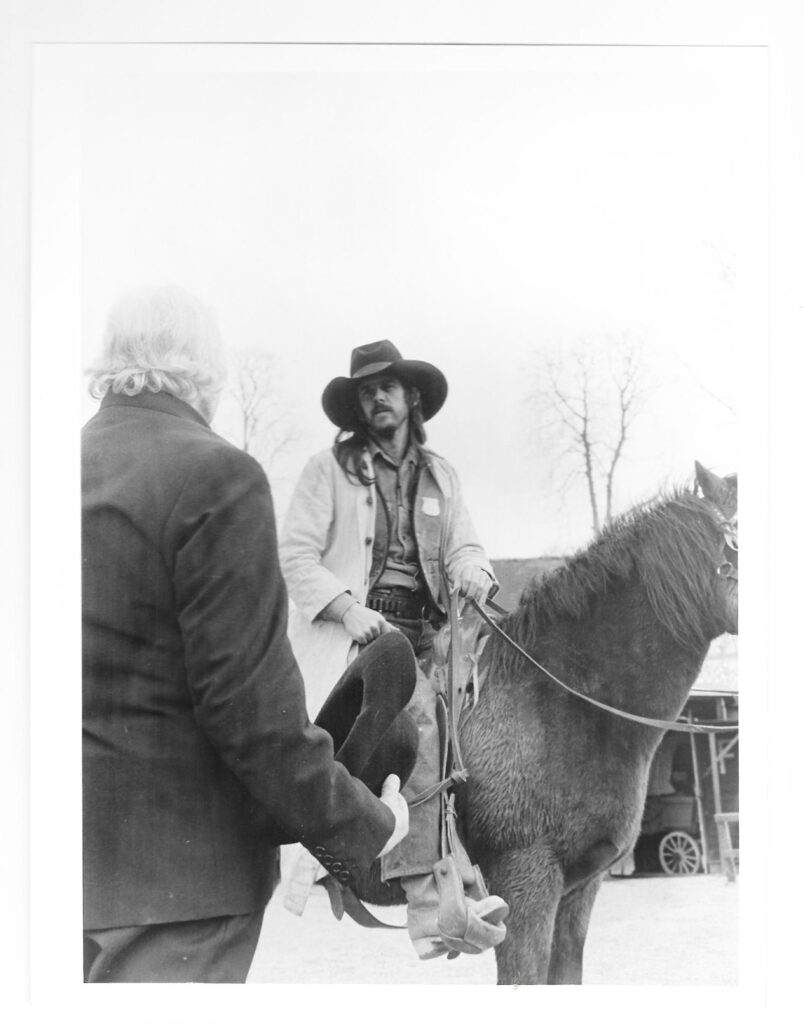
Jim: What of the other long-running story you worked on for Eagle, “Walk or Die”?
Howard: Well, the ‘Canadian wilderness’ in “Walk or Die” was mainly a gravel pit near my home, plus parts of the river Thames! I also had permission to photograph parts of the story on a private estate that operated as a Christmas tree plantation near Newbury. They allowed the trees to grow really tall around the edge of the plantation which was perfect for suggesting the untamed Rockies – or as perfect as you could get in the Home counties, anyway!
For the cabin used by the trapper, Jacques, in the story, I filmed the exteriors on the Littlecote Estate, where they had this small cabin in the woods. Then the interiors were shot back at Frontier City, with the blacksmith’s shop there doubling for the cabin interior. The Frontier City blacksmiths had Navajo blankets and bits of harness and traps and so on already in it, so it only took a bit of modification.
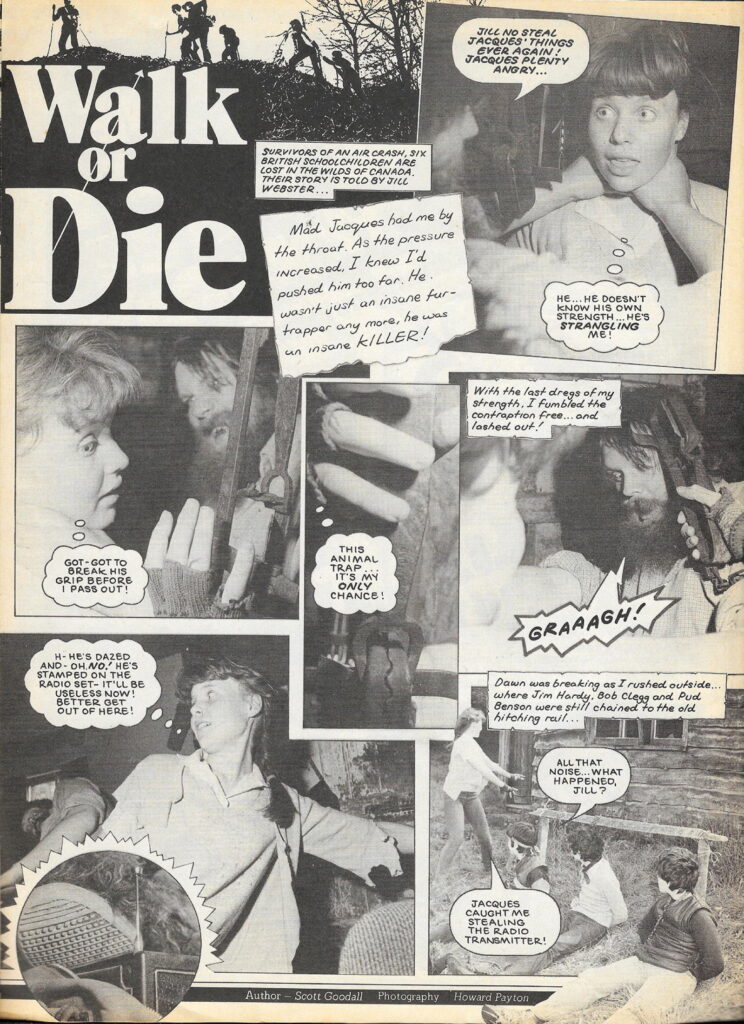

Jim: What about the performers in the story?
Howard: Jacques himself was played by a friend of mine called Graham Puntis, a sound recordist who later went on to be a film editor, and who featured in several of my stories. He lived in Newbury and loved all the dressing up. We blacked his teeth out for “Walk or Die”, and he already had this massive beard. He loved it! Maybe a bit over the top!
The teacher in the story was, if I remember correctly, a real teacher from the area, but with a bit of make-up applied to suggest that a bear had got her.
My daughters Aimee and Holly had bigger parts in “Walk or Die”. At one point Aimee’s character had to eat a snake. She was a vegetarian so wasn’t very happy about that. We used the neck of one of our lambs from the freezer as the ‘snake’.
I also filmed the children falling off a raft into the river, shot on the Thames. I had built the raft and it was attached to wooden stumps so that it didn’t drift off downstream, but all the children involved were properly out on the river. Anything with the children getting really wet, I’d leave till the last shot of the day so they wouldn’t have to stay wet for hours before their parents came to pick them up.
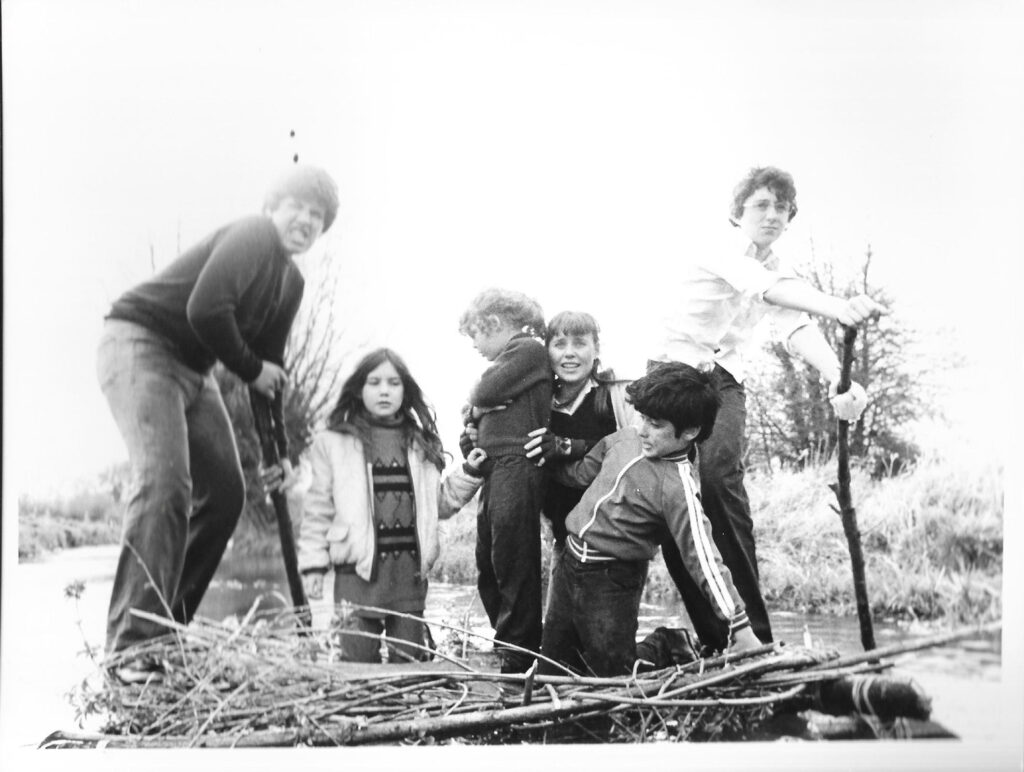
As with many of the photo comic stories, “Walk or Die” had a lot of dialogue in it and I tried hard to change the angles and so on to make the pages look visually interesting even if not much was ‘happening’ in the story. I’d shoot from really low down to make it look like people were on top of mountains. Plus, you could exclude things that way that you didn’t want getting into shot and it made the characters look heroic and tough.
For night sequences, I’d simply print shots a bit darker to suggest dusk or what have you.
Jim: Finally, what of your “Collector” stories in the Eagle?
Howard: Yes, not many of them, but they were fun. I can’t for the life of me think where we got the suit of armour for “Lair of the Dragon”. It wasn’t from Littlecote, as all their stuff was genuine and far too good to use for the photo stories.


“The Duel” featured my horse I know. For “Birds of a Feather”, they very much wanted to have goose quills in the story and I had geese on the farm so it was no problem to quickly fashion a few quills from their tail feathers. I then did a bit of calligraphy to produce the letter you see being written in the story. I’m not sure where the guns came from but probably from a neighbour. I’d have just borrowed them and used them.
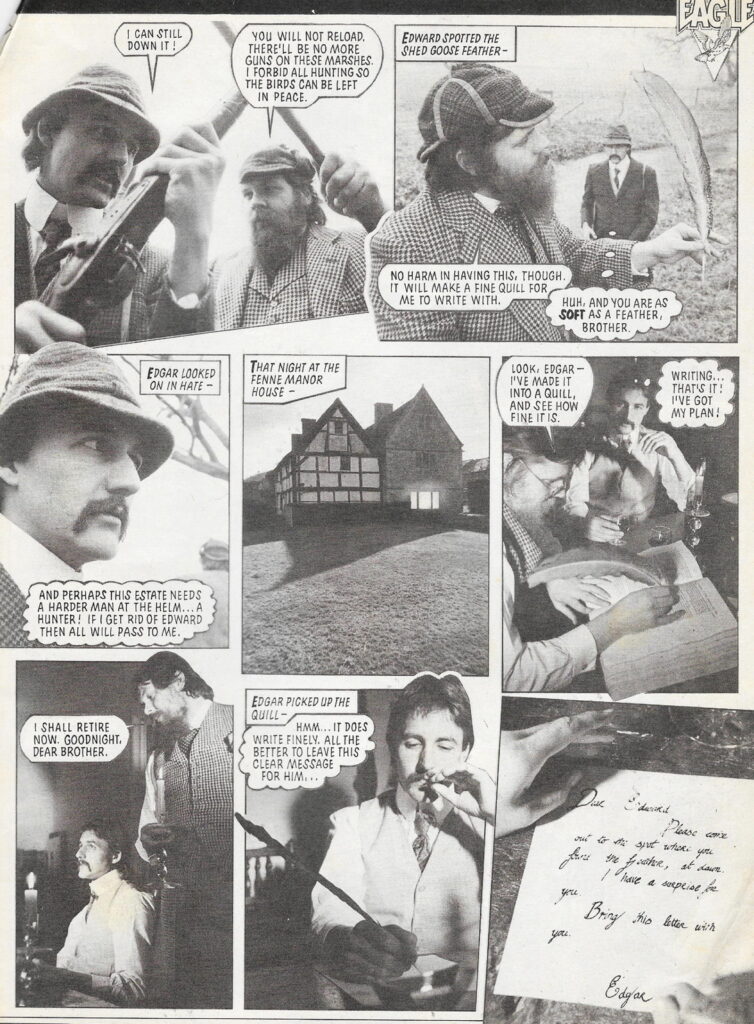
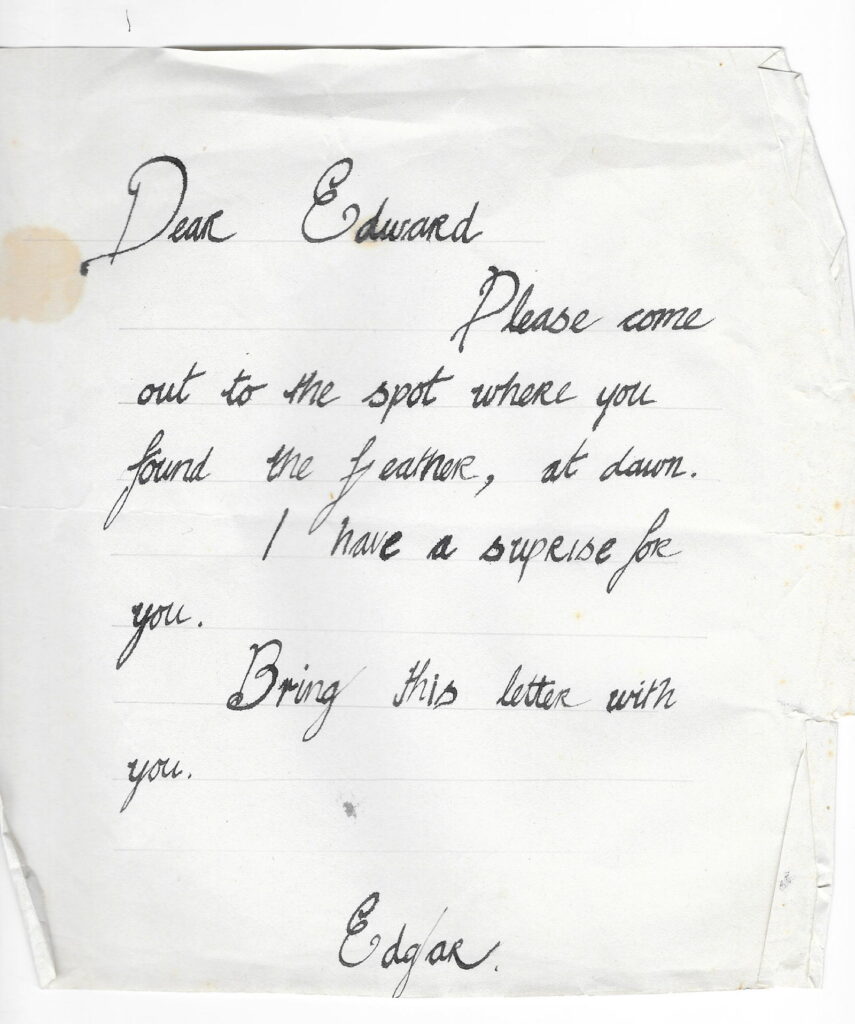
I know I did a football story for the Eagle too, but possibly only parts of it rather than the whole thing.
I didn’t actually get a lot of forewarning that Eagle were going back to 100 per cent drawn strips, and I was really sorry to find the photo comics drying up in the early 1980s as the market shrank. We weren’t paid enormous amounts of money for them, but they were good little earners, and they were great fun to do.
Howard, thank you very much for your time, and sharing your memories of working on some fondly-remembered comics.
Dr Jim O’Brien works in primary education, but also researches and writes on comics, illustration and film. He is a regular contributor to the magazine Illustration (cellopress.co.uk) and to Justin Marriott’s comic zine Battling Britons (available via Amazon, Issue 5 available now). He recently contributed an essay to the 2021 collection from Ablaze Books of Friday Foster: the Sunday Strips, edited by Christopher Marlon. In the early 2000s, he and Howard Payton were neighbours, without at the time either of them realising that the other had any involvement with or interest in comics. This they rectified later!
• Sadly, He Came Back to Love isn’t currently available to view anywhere, which is a real shame, but Howard and the film’s director, Chris Welch may rectify that lack – so there may be an ‘update’ at some point
• Howard continues to work in the arts as a member of The New Hardy Players, who bring the stories of Thomas Hardy to life through evocative dramatisations of his work | Web: hardyonline.org | Facebook | Twitter
FURTHER READING ON DOWNTHETUBES
• If anyone had a role in the Eagle photo strips, please do leave a comment below – please note, all initial comments made by someone new to this site are initially reviewed before publishing but are generally published automatically thereafter
• Behind the Scenes on Eagle: Secrets of Doomlord Revealed!
• Behind the Scenes of Eagle comic – An Interview with Dan Dare and Doomlord FX designer, Julian Baum
WEB LINKS
• Over on the Eagle Readers Facebook Group, Richard Pearce, Steve Winders, Shaqui Le Vesconte and others are attempting to identify the actors and Fleetway staff who featured in the photos strips, and identify locations, too. Do join in!
• Mike Mungarvan, Doomlord and Eagle Comic
Bob Fischer interviews actor Mike Mungarvan, who played the heroic Howard Harvey in the inaugural “Doomlord” strip. Mike offers his memories of working for Eagle comic… and, indeed, on the likes of Doctor Who and Star Wars.
EAGLE comic is ©️ Dan Dare Corporation
One of many guest posts for downthetubes.
Categories: British Comics, Comics, Creating Comics, downthetubes News, Features

 Crowdfunding Spotlight: Who Killed Nessie? A Quick Chat with Paul Cornell & Rachael Smith
Crowdfunding Spotlight: Who Killed Nessie? A Quick Chat with Paul Cornell & Rachael Smith  Who remembers Jerry Siegel’s British superheroes,”Gadgetman and Gimmick-Kid”?
Who remembers Jerry Siegel’s British superheroes,”Gadgetman and Gimmick-Kid”?  Catching up with the Comics Laureate! An interview with Bobby Joseph
Catching up with the Comics Laureate! An interview with Bobby Joseph  In Memoriam: Comic Artist, Writer, Inspiration: Paul Neary
In Memoriam: Comic Artist, Writer, Inspiration: Paul Neary
Fascinating read! I wonder if any of those stories made it across the English Channel and were translated into Dutch. So sad that none of the stories were credited.
Thank you for doing the interview!
Regards,
Ramon
Fantastic interview, amazing insights.
The photo-strip relaunch of the Eagle was a strange experiment. Photo strips were a style familiar to most boys who had a sister, I’m sure, but seemed so odd to find in an action comic. Some worked better than others, but the craft behind them was incredible.
All of Eagle’s photostories were printed in Greek, and several of the girls’ magazines photostories were also printed in the respective Greek girls’ magazines…
Thank you for the extra information!